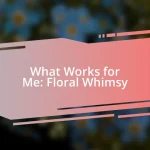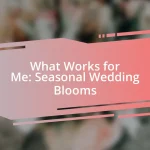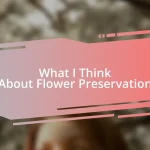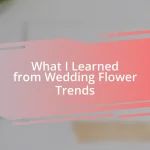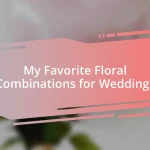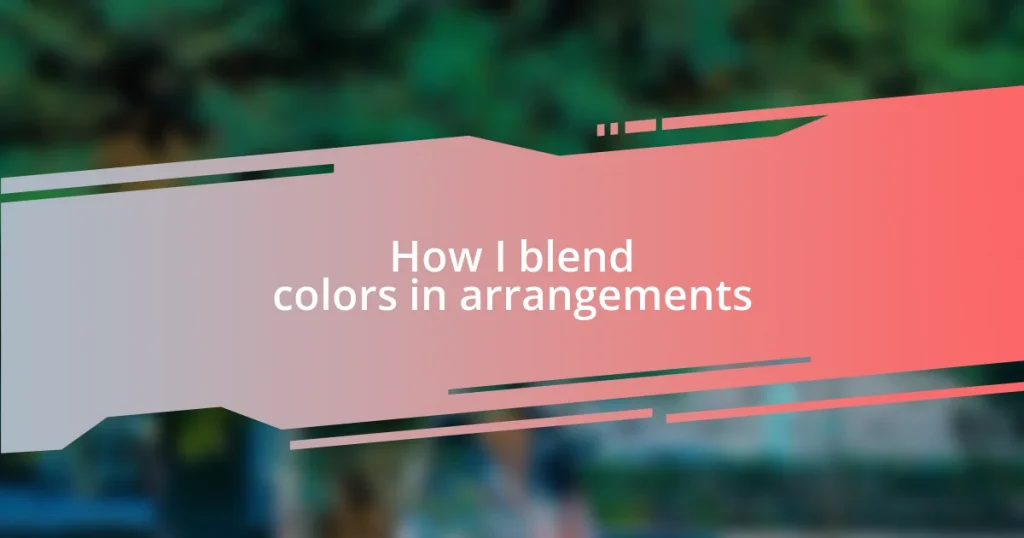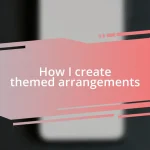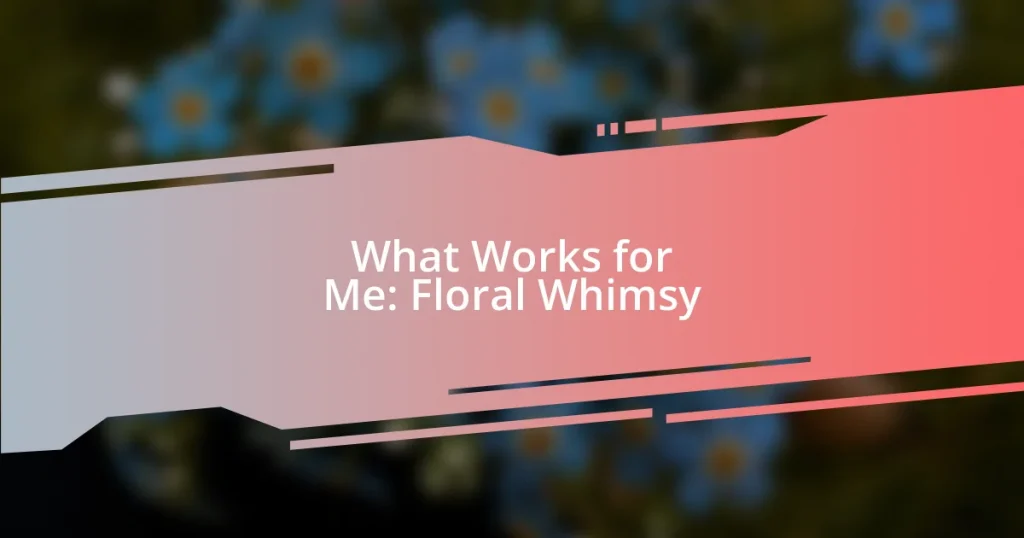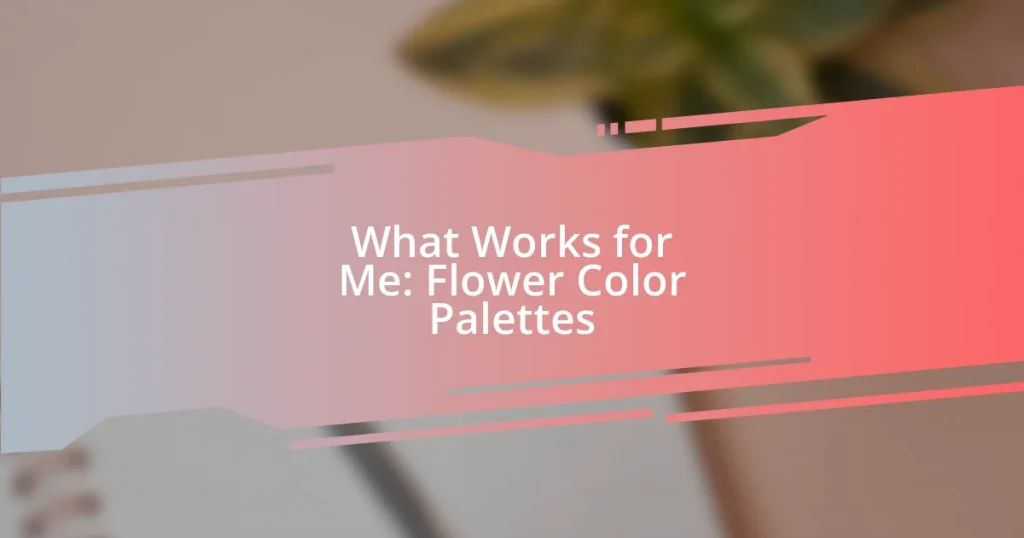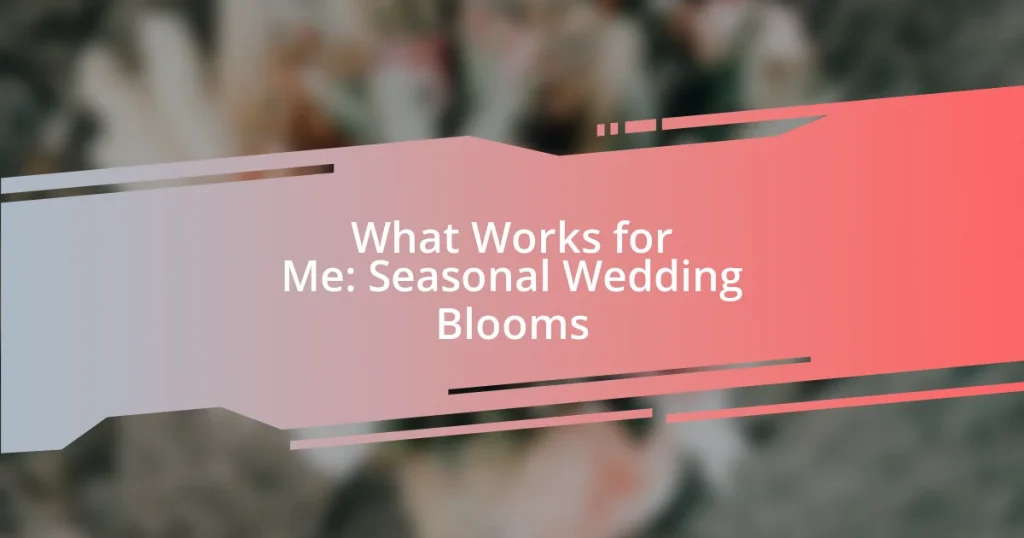Key takeaways:
- Understanding color theory involves recognizing color interactions, emotional impacts, and cultural meanings, enhancing one’s ability to create visually and emotionally resonant arrangements.
- Choosing a color palette with mood in mind, utilizing combinations of dominant, secondary, and accent colors, is essential for cohesion and emotional expression in designs.
- Incorporating contrast and diverse textures in arrangements adds depth and interest, inviting emotional connections and enhancing the overall aesthetic of the piece.
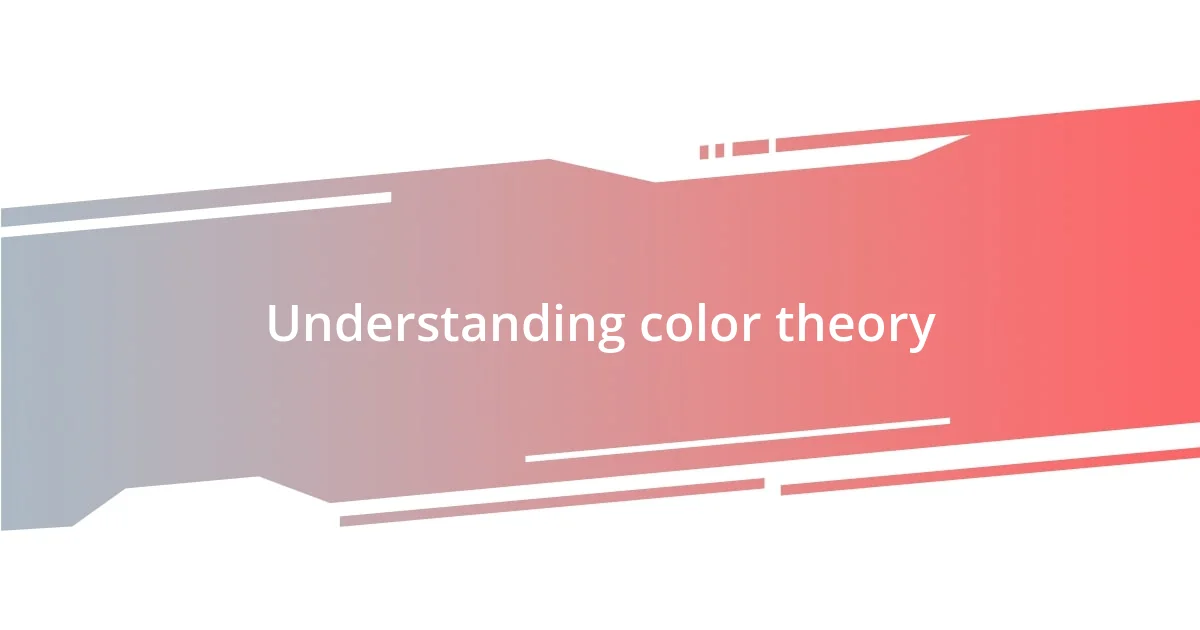
Understanding color theory
Color theory, at its core, is the study of how colors interact with one another and the emotions they evoke. I remember the first time I dabbled in color mixing; the excitement of watching two seemingly ordinary colors transform into something vibrant was nothing short of magical. How do you feel when you see a bright yellow paired with a deep blue? For me, it sparks a joy that can be hard to put into words.
Understanding the color wheel is fundamental. It organizes colors into primary, secondary, and tertiary families, allowing us to see relationships at a glance. When I first learned about complementary colors—those opposite each other on the wheel—I was fascinated by how they can create stunning contrast and allure. Have you ever noticed how a splash of orange can make a blue arrangement pop?
Moreover, the meaning of colors varies by culture, which adds another layer of depth to our understanding of color theory. Reflecting on my experiences, I’ve seen how a deep red can convey love in one culture while representing danger in another. Isn’t it intriguing how the context of color can shift its emotional impact? This exploration has profoundly influenced the way I approach arrangements, ensuring each color choice aligns with not only aesthetic goals but emotional resonance.
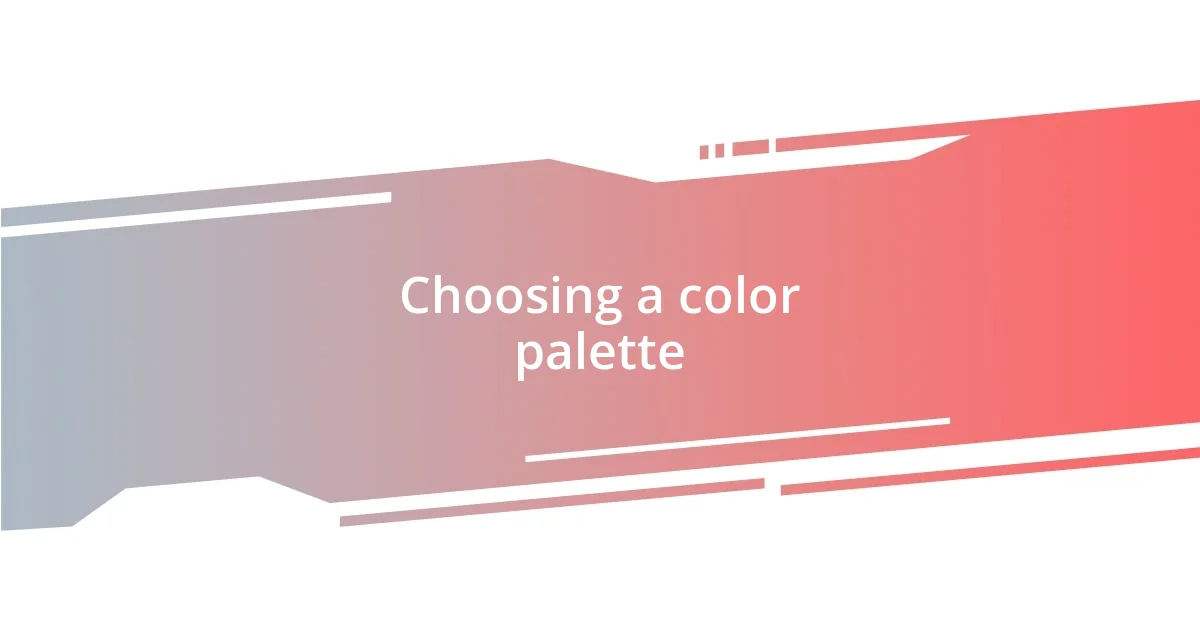
Choosing a color palette
When I select a color palette, I often think about the mood I want to convey. For example, during my first floral arrangement for a wedding, I chosen soft pastels, which created an atmosphere of romance and serenity. The couple’s reaction was a joyful reminder of how powerful color can be in setting a tone. Have you ever paired shades of blue and green for a calming effect? It truly brings a sense of tranquility.
I find that a harmonious palette consists of five key colors: a dominant, a secondary, and three accent colors. This method has served me well, especially when I ventured into creating seasonal arrangements. I remember using warm oranges and browns for fall, complemented by a striking white—those accents brought the whole piece to life. The balance made it visually striking yet cohesive.
It’s crucial to test colors together before committing. I usually lay out my choices in natural light, as it reveals nuances that artificial light can hide. There was a time when I paired two shades of pink without realizing how clashing they were until I saw them side by side in daylight. This experience taught me the importance of visual testing, and now I approach every color selection with this in mind.
| Color Palette Type | Description |
|---|---|
| Monochromatic | Variations of a single hue, creating a cohesive look. |
| Analogous | Colors next to each other on the wheel, offering harmony. |
| Complementary | Opposite colors on the wheel, creating vibrant contrasts. |
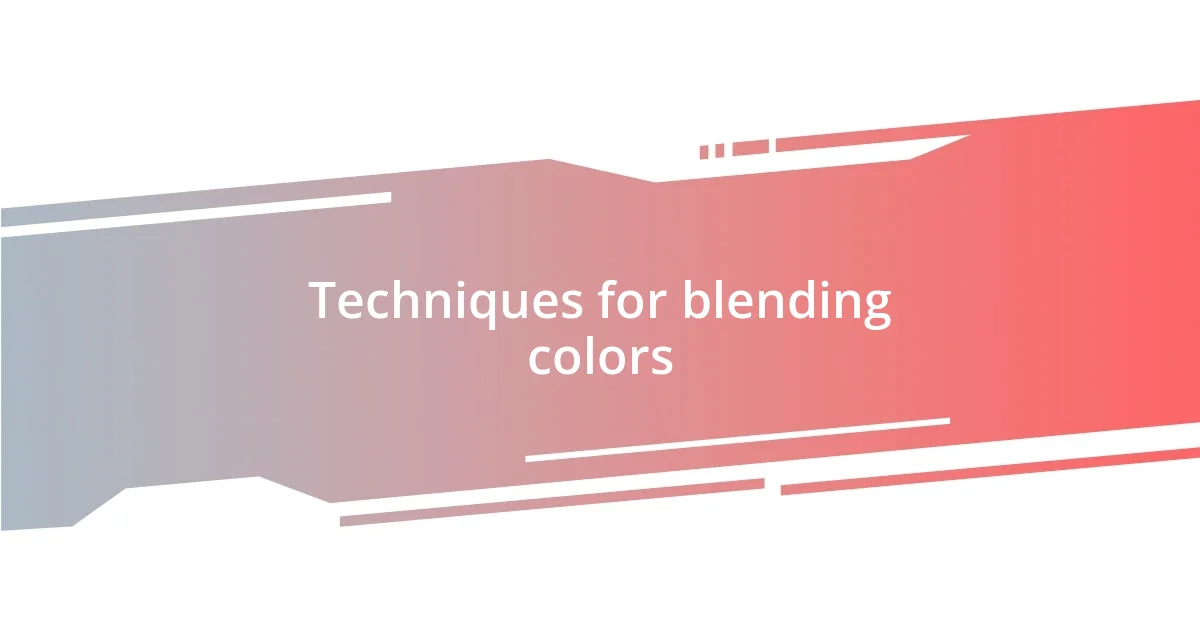
Techniques for blending colors
When blending colors, I find that the layering technique often yields mesmerizing results. I remember working on an arrangement where I gradually added shades of purple over a base of soft pink. The transformation was immediate; the depth that emerged from the combination was breathtaking. Sometimes, it’s just about trying different applications—whether it’s using a sponge, brush, or even my fingertips—to see how the colors interact.
Here are some effective techniques I recommend for blending colors:
- Wet-on-wet: This technique involves applying a wet color onto another wet surface, allowing colors to flow and blend seamlessly.
- Color glazing: Laying transparent washes of color over dried paint creates depth and can produce stunning effects.
- Ombre effect: I often use this technique by starting with a darker shade at the base and gradually blending it into a lighter hue, creating a smooth transition.
- Color lifting: After applying color, I sometimes use a damp brush or cloth to lift off certain areas, revealing underlying layers and creating interesting textures.
- Feathering: By lightly dragging a damp brush across two colors, I can achieve soft edges that blend beautifully without harsh lines.
Each of these methods brings its own magic; exploring them often leads to delightful surprises in my arrangements.
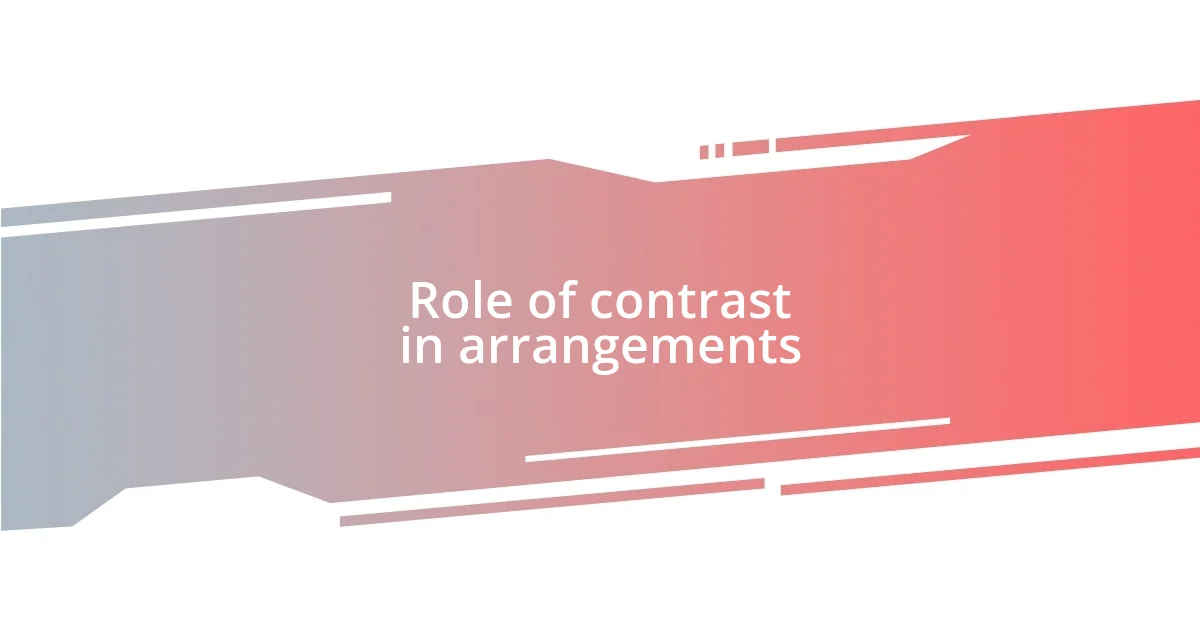
Role of contrast in arrangements
The role of contrast in arrangements cannot be overstated. I remember my early attempts at floral design, where I would shy away from bolder hues. One day, I decided to incorporate a vibrant red against pale yellow flowers for a centerpiece. The moment I stepped back to admire my creation, the sharp contrast filled me with a rush of excitement. It’s fascinating how a stark difference can elevate an arrangement, drawing the eye and creating focal points.
When I think about contrast, I often consider the emotions it evokes. For instance, while creating an arrangement with dark, moody colors, I introduced soft white flowers amidst the deeper tones. The transformation was remarkable. This juxtaposition not only caught attention but also evoked a sense of balance—almost like a comforting embrace amidst chaos. Have you ever experienced how the right contrast can change the entire mood of a piece? It’s that magical interplay that keeps me inspired.
Incorporating contrast is also about understanding the viewer’s perspective. I once crafted a piece filled with various greens, and while it looked lush, it lacked excitement. I decided to insert a splash of bright orange and, just like that, the dynamic changed entirely. It became a conversation starter at the event. I realized then that contrast invites exploration, encouraging viewers to take a closer look and feel a deeper connection to the arrangement. That’s the beauty of color contrast; it’s an essential tool that can turn a simple arrangement into a captivating narrative.
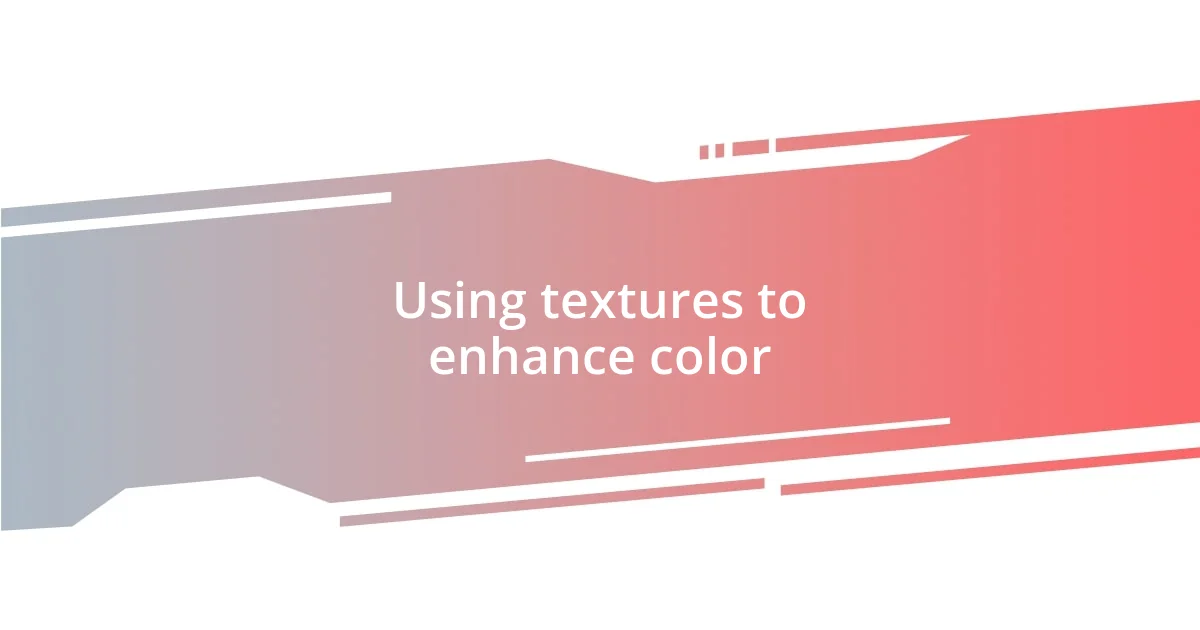
Using textures to enhance color
Textures have this incredible way of enriching colors in any arrangement. I once worked on a project that featured terracotta pots and soft, furry moss. The combination brought out the vibrancy of the flowers in a way that smooth surfaces just couldn’t achieve. It was like witnessing a dance between the soft and the firm, and I couldn’t help but smile at how textures could tell their own story around the colors.
When I think of textures, I’m reminded of a vivid fall arrangement I created using rough burlap against sleek glass. The contrasting textures not only highlighted the rich reds and golds of autumn foliage but also added an inviting warmth. Have you ever considered how a simple touch can invite people to reach out? That’s the emotional connection textures can forge—drawing viewers in with the promise of a multi-sensory experience.
In my experience, incorporating diverse textures can transform even a monochromatic arrangement. I recall crafting an all-white centerpiece, pairing silky lilies with crinkled hydrangeas and gritty stones. The visual depth was stunning, and the tactile variety made it irresistible to touch. Isn’t it fascinating how the interplay of different textures can elevate a palette, allowing each color to shine even brighter? That’s the magic of textures—they enhance colors and create a narrative that resonates deeply with anyone who dares to look closer.
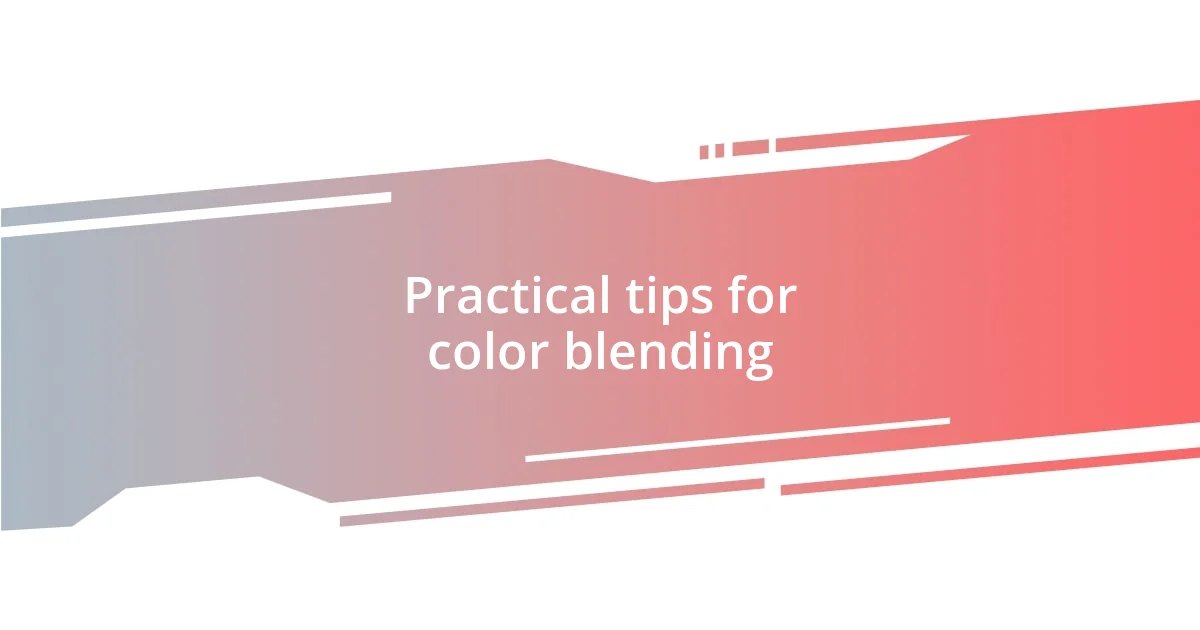
Practical tips for color blending
When blending colors in arrangements, I always focus on the concept of harmony. I vividly recall a summer wedding where I used various shades of peach combined with delicate whites and greens. The result was not just visually striking; it evoked a sense of warmth and joy that perfectly matched the couple’s theme. How does a color-related emotion shape your interpretation of an arrangement? For me, it’s about creating an emotional connection that resonates with the viewer’s feelings.
I find that experimenting with color ratios is essential. I once created a vibrant bouquet featuring deep purples balanced with soft pinks. It felt like a dance between the boldness of the purples and the gentle nature of the pinks. That careful proportioning allowed each color to breathe and complement one another, rather than compete. Have you ever played around with different ratios? The right balance can transform an arrangement from ordinary to extraordinary, giving it depth and intrigue.
Another practical tip is to create gradients by transitioning colors smoothly. I approached this technique while designing a centerpiece that shifted from lush greens at the base to soft yellows at the tips. It was mesmerizing to see how those gradual transitions brought a sense of movement and life to my design. Isn’t it amazing how a seamless flow can guide the eye and create storytelling within an arrangement? Each layer can evoke new emotions, drawing people in and inviting them to explore the narrative woven through the colors.
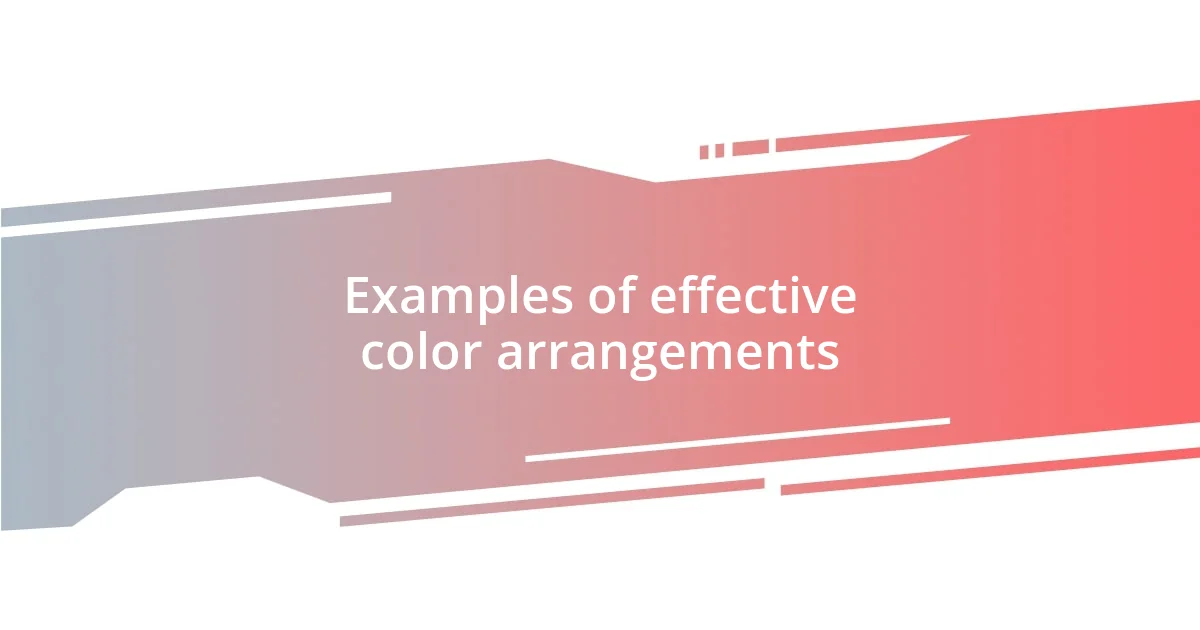
Examples of effective color arrangements
One of my favorite examples of effective color arrangement happened during a spring exhibition I organized. I paired vibrant coral peonies with soft lavender blooms, creating a delightful visual tension that instantly drew everyone’s attention. Have you ever noticed how some color combinations can almost sing together? It’s like a melody where each hue enhances the other’s beauty, resonating with the onlookers in an unspoken language of colors.
Another powerful arrangement I crafted featured a rich emerald green backdrop accented by pops of bright yellow daisies. The contrast was striking, yet harmonious, bringing a sense of energy into the space. It reminded me of a sunlit meadow bursting into life. If you ever find yourself in a creative rut, consider how contrasting colors can breathe new life into your arrangements, evoking both excitement and happiness.
In a recent event, I decided to create a monochromatic scheme of blues, utilizing varying shades from deep navy to soft sky blue. I incorporated accents like shimmering silver to enhance the visual depth. Observing people’s reactions was enlightening—it created a calm yet luxurious atmosphere. Isn’t it intriguing how different shades of the same color can elicit such varied emotions? This subtlety is where the true beauty of color arrangement lies, offering layers of meaning and connection to those who experience it.
